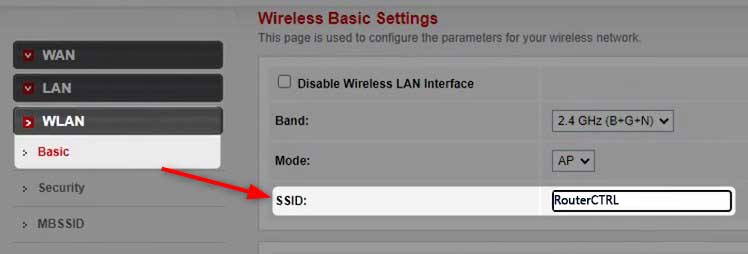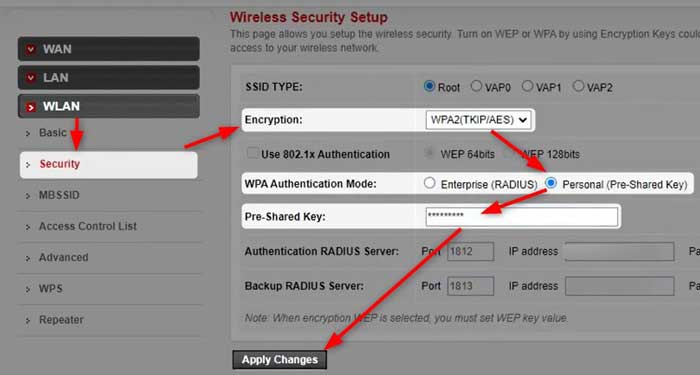If you own a Beetel router and you want to make it more secure and configure it just the way you like then you are in the right place. This article is going to guide you through the Beetel router login steps and explain where to start when you want to secure your router and network.
Being prepared is half of the work done so before you try logging into the Beetel router admin dashboard, it is good to know the following.

CONTENTS
What You Need:
First of all, you will need a device to connect to the network and use it to access the router settings. It can be a computer, a tablet, or a smartphone.
The next most important thing is to connect that device to your network. If you can’t connect to the network, the router login process will fail. Therefore, either connect the device to the router using a network cable or connect over WiFi using your wireless password.
And finally, you will need the Beetel router admin login details. These include the router’s IP address and the default admin username and password. If you don’t know these login details, you can check the user’s manual, find the label on the router that has these login details printed on it or use the ones given below.
Once you make sure you have all the things we have just mentioned, the rest of the Beetel router login process is pretty simple and should be completed in a minute or so.
What Are The Default Beetel Router Details?
These are the default Beetel router login details. However, if they don’t work for some reason, we recommend comparing these with the ones printed on the label we have just mentioned.
Default Beetel router IP address: 192.168.1.1
Default Beetel admin username: admin
Default Beetel admin password: password
Beetel Router Step-By-Step
Now when you have everything ready, let’s access the Beetel router settings.
STEP 1 – Check Whether The Device Is Connected
We have mentioned this as a key step in the login process, and because of its importance we have to mention it again. The reason for this is that if your device isn’t connected you won’t have a chance to login. Only devices that are part of the network can access the router settings. If you have checked this and your device is connected, please continue.
STEP 2 – Launch The Browser On The Device
The device already has a web browser installed so all you have to do now is to unlock the device and launch the web browser.
Any browser we use today is good enough. Choose the one you use every day, it doesn’t matter whether it is Google Chrome, Opera, Mozilla Firefox or some other. The only thing to take care of at this point is to make sure that the browser has been updated recently. In some cases, an older version of the browser can have issues with the router’s admin dashboard. So, in order to avoid this, just update it.
STEP 3 – Enter The Beetel IP In The Browser’s URL Bar

The Beetel default IP is 19.168.1.1. Type this IP in the URL bar. Press the Enter button when you do that and if you are asked for the admin username and password, the IP is correct. But in case the router login page doesn’t appear, check the following:
- Have you typed the IP correctly? Retype the IP and repeat step 3 again.
- Is 192.168.1.1 the right IP address? You can find the IP easily on your own. We have written a detailed guide on how to find the router IP on different devices.
The router login page should appear now.
STEP 4 – Enter The Beetel Admin Login Details
Now you need to enter the Beetel admin login details in the router login page. The username is admin, the password is password, so enter these login details carefully in the required fields.
These are case sensitive so pay attention when you type them. And also, we have to say that if you know that the default admin login details have already been changed by you or your ISP, use the custom ones to access the Beetel router settings.
Click the Login button now and you should see the Beetel Status page.
STEP 5 –You Can Manage Your Beetel Router Now
And that is practically it. In just a few steps you now have full control over the router settings and your network. Everything is well organized and you will find your settings easily. If you are not too confident in making some changes, we recommend backing up the router configuration first.
Recommended reading:
- How to Get Internet While Traveling? (Best Ways to Get Internet While Travelling)
- Computer Can’t Find Wi-Fi But Phone Can (Best Solutions)
- How to Find Password of Wi-Fi I’m Connected To? (View Saved Wi-Fi Passwords)
- Finding the Perfect Location for a Wireless Router: Upstairs or Downstairs?
How To Change The Beetel WiFi Name And Password?
Now, one of the settings most people want to know how to change is the wireless network name and password. Here is how to find those settings and make the necessary changes.
1. Login to the Beetel router settings as explained above.
2. Click on Setup in the top menu, and then click on WLAN in the menu on the left.
3. Click on Basic in the left-hand menu and the Wireless Basic Settings page will show up.
4. Find the SSID field and enter the new wireless network name there, if you want to change it.

5. Click Apply Changes and you will see a message saying WLAN is restarting. Wait for it to complete.
6. Now click on Security in the left-hand menu.

7. As Encryption select WPA2(TKIP/AES)
8. Set the WPA Authentication Mode to Personal (Pre-Shared Key)
9. Enter the new WiFi password in the Pre-Shared Key field.
10. Click on Apply Changes. WLAN will restart again.
You will be disconnected in case you have connected your device using a wireless connection. In case that happens, connect the device again and update the WiFi password on the other wireless devices you are using.
Final Words
We hope that we have helped you access the Beetel router settings. As you can see, if you are well prepared, the login process can be completed pretty quickly. And then changing the WiFi name and password is just the beginning. There are plenty of other options you can enable or disable or change that will make your home network safe from unwanted access and abuse. If you want to learn more about those other options, you can read this article on How to encrypt your wireless network. Enjoy!

Hey, I’m David. I’ve been working as a wireless network engineer and a network administrator for 15 years. During my studies, I also worked as an ISP field technician – that’s when I met Jeremy.
I hold a bachelor’s degree in network engineering and a master’s degree in computer science and engineering. I’m also a Cisco-certified service provider.
In my professional career, I worked for router/modem manufacturers and internet providers. I like to think that I’m good at explaining network-related issues in simple terms. That’s exactly what I’m doing on this website – I’m making simple and easy-to-follow guides on how to install, set up, and troubleshoot your networking hardware. I also review new network equipment – modems, gateways, switches, routers, extenders, mesh systems, cables, etc.
My goal is to help regular users with their everyday network issues, educate them, and make them less scared of their equipment. In my articles, you can find tips on what to look for when buying new networking hardware, and how to adjust your network settings to get the most out of your wi-fi.
Since my work is closely related to computers, servers, and other network equipment, I like to spend most of my spare time outdoors. When I want to blow off some steam, I like to ride my bike. I also love hiking and swimming. When I need to calm down and clear my mind, my go-to activity is fishing.
